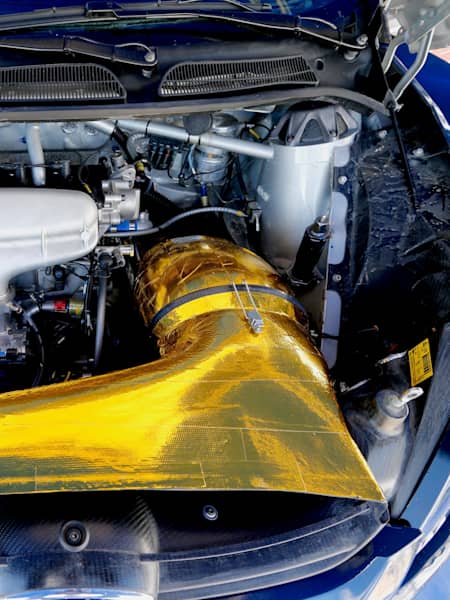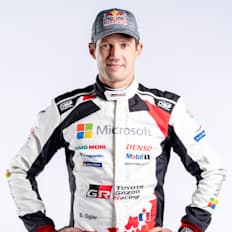Red Bull Motorsports
The turbocharger has been around in rallying for a couple of decades now, and years spent honing the art of recycling air back into the engine has led to today's World Rally Cars being some very sophisticated blown-engined beasties indeed.
But how do turbochargers work, why are they used and how will they develop in the future? With the help of M-Sport's engine guru Tom Flynn, let RedBull.com guide you through how turbochargers really make the top-level World Rally Championship cars shift.
How does a turbocharger work?
A turbocharger is a system that reuses hot exhaust gases kicked out by a car’s engine. Instead of passing out through the car’s exhaust and into the atmosphere, those waste gases are re-routed back to through a turbine in the turbo.
That turbine is then connected to a compressor, which squashes the air down, making it denser and giving the driver more boost, more torque and more power. Easy!
In a...
... the turbine spins at around 150,000 revolutions per minute (rpm) – a bit faster in the high altitudes of...
... where the air is hot and thin, and a bit slower at...
... where the air is cold and dense.
So how much punch is all this turbocharging giving the WRC's drivers? According to Tom Flynn, "if you were to compare it to a Super 2000 car, which is naturally aspirated [non-turbocharged], you'd be talking in the region of 100 newton metres of torque – which is a lot!"
Levelling the playing field
Whereas back in the Group B era of the 1980s, teams were able to come up with innovative tricks to make their cars work better – Lancia used both a supercharger and turbocharger on their Delta S4, for example – now the WRC is bound by much stricter rules.
All the teams have to use the same turbo, made by US firm Garrett, with the same 33mm restrictor plate to control how much air can flow into it. M-Sport could spin the turbo faster, but don't because of what's known as 'choked flow'. "Because the air passing through the restriction is at maximum, you cannot go beyond that," explains Flynn. "So if you spin the turbo faster, you'll just damage it and you won't gain any power."
The similarity of the specifications on the cars these days mean that the difference in times on a World Rally stage is now almost entirely down to a driver's performance.

2 min
Rally Mexico 2015 special clip
Find out why the WRC cars get breathless on the Mexican stages.
Not lagging behind
Drivers of early turbocharged road cars – the Saab 99 for example – will remember the sensation of being smacked in the back a few seconds after putting their foot down, as the turbo spooled up and provided the extra power boost. That's known as turbo lag, and it's not something current WRC drivers have to deal with.
"When you come off the throttle, we open a valve, which releases air into the exhaust pre-turbo," says Flynn, explaining what's imaginatively known as the 'anti-lag system'. "You retard the ignition at the same time and inject the fuel. That then explodes right through the turbo, keeping it spinning off-throttle. So basically, there's no lag at all."
That gives the drivers instant throttle response. But making sure the system is set correctly is one of an engineer's main jobs throughout testing and during a rally – too aggressive and the back end will slide, scrubbing off speed; too weak and the car won't pull out of the corners very well.
The future of turbocharging
Because the WRC's turbochargers could handle a good deal more power – the same engine with a bigger restrictor used in the World Touring Car Championship produces around 70 horsepower more – teams like M-Sport have got to a point where their systems are pretty much nailed down. The only gain to be had, according to Flynn, would be in reducing friction.
"You could probably work on bearings and that type of thing," he says, "but we're already running on ball-bearing turbos and friction is very low, so there's very little loss there. It's quite an efficient unit."
For more Red Bull Motorsports action, follow @redbullmotors on Twitter
Part of this story












